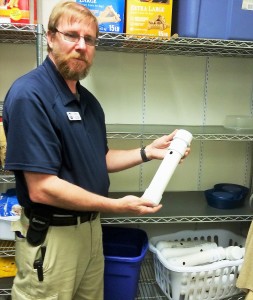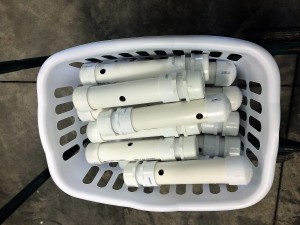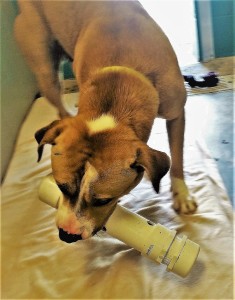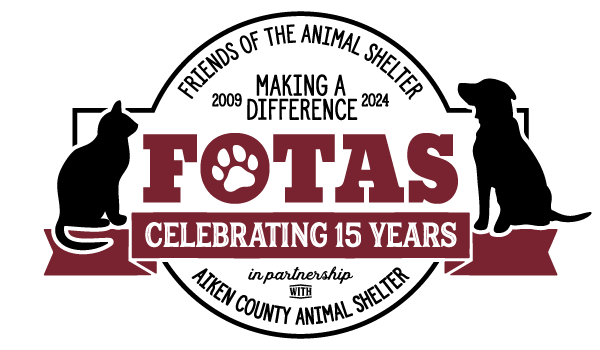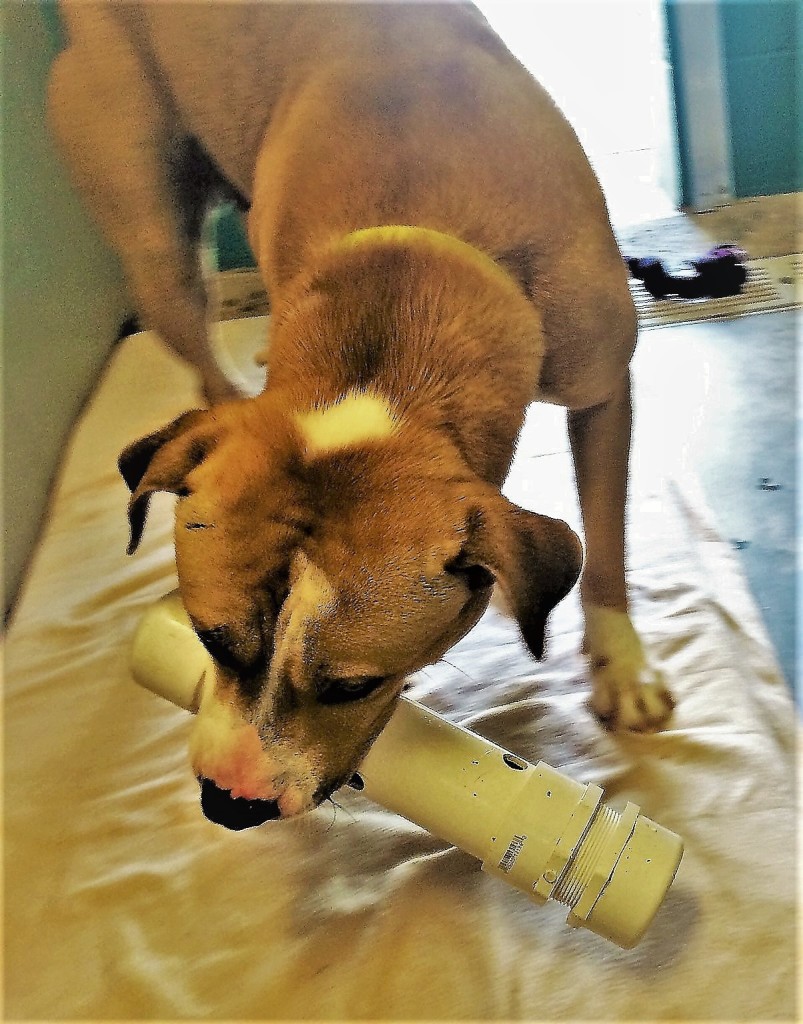by Bob Gordon, FOTAS Director of Communications
In the morning, the Aiken County Animal Shelter (ACAS) dogs are fed their breakfast in stainless steel bowls. But at dinner, their meal gets more interesting.
Shiny white, foot-long PVC tubes filled with kibble are brought out and given to each dog. Each of the tubes, 2 inches in diameter, feature three small holes to allow kibble to escape when the dogs move them.
“It gives them something to focus on and is like a puzzle they have to solve,” says ACAS Kennel Tech Jevon Garcia as he distributes the interactive feeders to the dogs. Indeed, it seems to briefly take the dogs’ minds off their situation of being homeless and in a shelter.
Watching the dogs approach the feeders is entertaining and some are better at it than others. Raegan, a young Retriever/Shepherd mix, is new to the feeder and slowly learns that nudging it magically makes food appear. But Bellamy, a 2-year-old Hound mix, is more experienced with the feeder and immediately pushes it along the floor in a workmanlike fashion. He eagerly pounces on the white pipe, nudging it with his nose and front paws to release the kibble and gobble it down. Whenever the pipe rolls against the wall of his kennel, Bellamy picks it up and moves it back to position where he can roll it some more. Jevon said Bellamy is the most skillful interactive eater and always finishes his afternoon meal before his fellow canines.
The dogs’ dinner has been served this way for about a month now and it all started with a suggestion from FOTAS board member and volunteer, Ellie Joos. She saw a similar homemade device demonstrated in a YouTube video and asked Dean Spiro if he could build a prototype that could be tested at the Shelter. Dean, whose background is electrical engineering but is good with his hands, took on the challenge and created samples, then tested them on his own dogs, Freddy and Sage. Once his Dachshunds gave the PVC pipe feeders two paws up, he gave some prototypes to the Shelter staff for a test run.
“We weren’t sure what to expect but when we gave them their first meal in them, we noticed complete silence except for the rolling of the feeders as they worked to get the kibble out,” said ACAS Lead Kennel Tech Randy Bush. “No barking or crying – it seemed to relieve their stress a great deal.”
The PVC pipe interactive feeders slow down eating enough to prevent bloating that can occur in larger dogs when they eat too quickly and gulp down a lot of air. They are washed after every meal and are not given to puppies, small dogs, or malnourished canines.
FOTAS paid for the materials to build 50 and Dean, with the help of his friend, Richard Stamm, fulfilled the first order. Then the shelter asked for 50 more. And then 40 more. While the materials are funded by FOTAS, Dean and Richard are donating their time to help the shelter animals.
“It’s been a fun project and we’re pleased to take part in something that’s helped make the dogs happier,” Dean said.
Their lives are in our hands.
